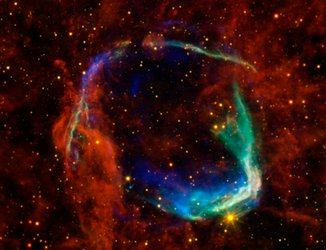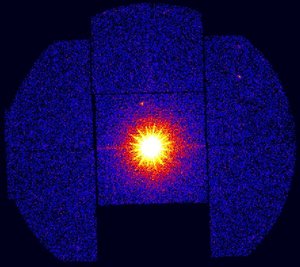Accept all cookies Accept only essential cookies See our Cookie Notice

About ESA
The European Space Agency (ESA) is Europe’s gateway to space. Its mission is to shape the development of Europe’s space capability and ensure that investment in space continues to deliver benefits to the citizens of Europe and the world.
Highlights
ESA - United space in Europe
This is ESA ESA facts Member States & Cooperating States Funding Director General Top management For Member State Delegations European vision European Space Policy ESA & EU Responsibility & Sustainability Annual Report Calendar of meetings Corporate newsEstablishments & sites
ESA Headquarters ESA ESTEC ESA ESOC ESA ESRIN ESA EAC ESA ESAC Europe's Spaceport ESA ESEC ESA ECSAT Brussels Office Washington OfficeWorking with ESA
Business with ESA ESA Commercialisation Gateway Law at ESA Careers Cyber resilience at ESA IT at ESA Newsroom Partnerships Merchandising Licence Education Open Space Innovation Platform Integrity and Reporting Administrative Tribunal Health and SafetyMore about ESA
History ESA Historical Archives Exhibitions Publications Art & Culture ESA Merchandise Kids Diversity ESA Brand Centre ESA ChampionsLatest
Space in Member States
Find out more about space activities in our 23 Member States, and understand how ESA works together with their national agencies, institutions and organisations.
Science & Exploration
Exploring our Solar System and unlocking the secrets of the Universe
Go to topicAstronauts
Missions
Juice Euclid Webb Solar Orbiter BepiColombo Gaia ExoMars Cheops Exoplanet missions More missionsActivities
International Space Station Orion service module Gateway Concordia Caves & Pangaea BenefitsLatest
Space Safety
Protecting life and infrastructure on Earth and in orbit
Go to topicAsteroids
Asteroids and Planetary Defence Asteroid danger explained Flyeye telescope: asteroid detection Hera mission: asteroid deflection Near-Earth Object Coordination CentreSpace junk
About space debris Space debris by the numbers Space Environment Report In space refuelling, refurbishing and removingSafety from space
Clean Space ecodesign Zero Debris Technologies Space for Earth Supporting Sustainable DevelopmentLatest
Applications
Using space to benefit citizens and meet future challenges on Earth
Go to topicObserving the Earth
Observing the Earth Future EO Copernicus Meteorology Space for our climate Satellite missionsCommercialisation
ESA Commercialisation Gateway Open Space Innovation Platform Business Incubation ESA Space SolutionsLatest
Enabling & Support
Making space accessible and developing the technologies for the future
Go to topicBuilding missions
Space Engineering and Technology Test centre Laboratories Concurrent Design Facility Preparing for the future Shaping the Future Discovery and Preparation Advanced Concepts TeamSpace transportation
Space Transportation Ariane Vega Space Rider Future space transportation Boost! Europe's Spaceport Launches from Europe's Spaceport from 2012Latest

A combined optical and X-ray image of M31
Thank you for liking
You have already liked this page, you can only like it once!
This is an optical H-alpha image overplotted with contours from Chandra observations.
The optical image of the central area of M31 was taken with the 4-metre Kitt Peak National Observatory telescope during the Local Group Survey. The overlying contours are taken from merged observations of the Chandra High Resolution Camera in the imaging mode (HRC-I) carried out from December 2004 to February 2005.
The positions of 17 counterparts of optical novae detected in these images are indicated with circles and nova names. Nova names are given omitting the M31N prefix. The cross between the novae M31N 1995-09b and M31N 2004-11f indicates the centre of M 31 center, the point aimed at for observation.
It was detected that eleven out of the 34 novae that had exploded in the galaxy during the previous year were shining X-rays into space. An additional seven novae remained detectable in X-rays up to 10 years after outburst.
The conclusion of the scientists is that the number of X-ray-detected optical novae is higher than previously expected, an important indication of the physical properties of these systems. The short-lived optical novae form a new ‘live fast and die young’ class of X-ray sources that would have been overlooked in the past by surveys carried out only every six months.
To investigate further, the team have been awarded more XMM-Newton and Chandra observing time. They now plan to monitor M31’s novae every ten days for several months, starting in November 2007.
-
CREDIT
W. Pietsch (MPE Garching, Germany), P. Massey (Lowell Observatory, USA), NASA/Chandra -
LICENCE
ESA Standard Licence

Multicoloured view of supernova remnant

NGC 5907 X-1: record-breaking pulsar

XMM-Newton’s image of X-ray nova IGR J17497-2821

Andromeda: our nearest large galactic neighbour















 Germany
Germany
 Austria
Austria
 Belgium
Belgium
 Denmark
Denmark
 Spain
Spain
 Estonia
Estonia
 Finland
Finland
 France
France
 Greece
Greece
 Hungary
Hungary
 Ireland
Ireland
 Italy
Italy
 Luxembourg
Luxembourg
 Norway
Norway
 The Netherlands
The Netherlands
 Poland
Poland
 Portugal
Portugal
 Czechia
Czechia
 Romania
Romania
 United Kingdom
United Kingdom
 Slovenia
Slovenia
 Sweden
Sweden
 Switzerland
Switzerland
























